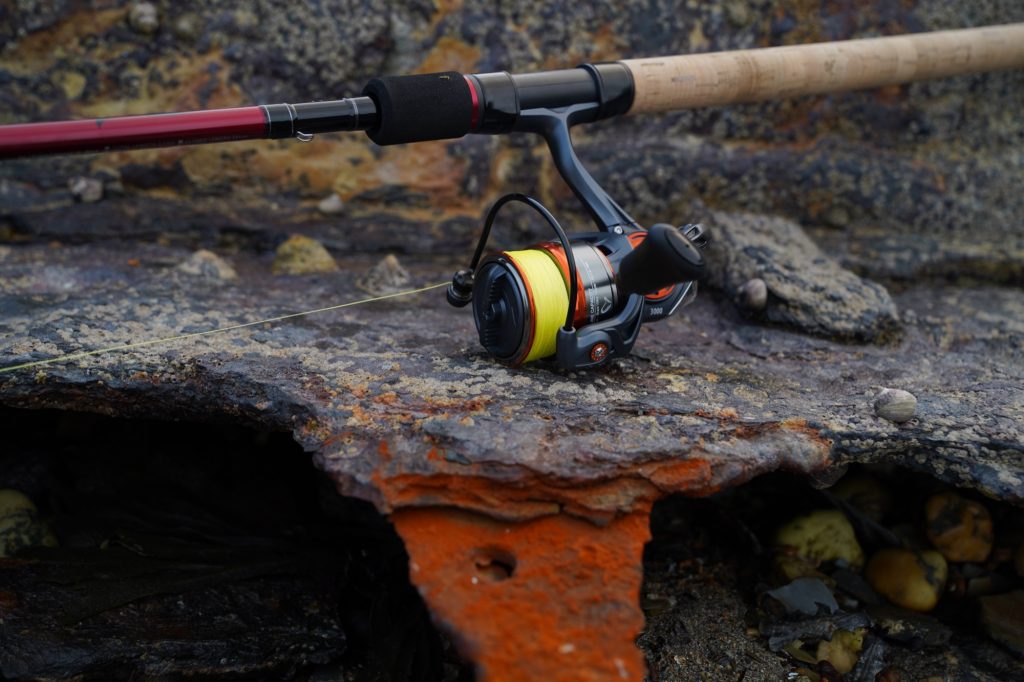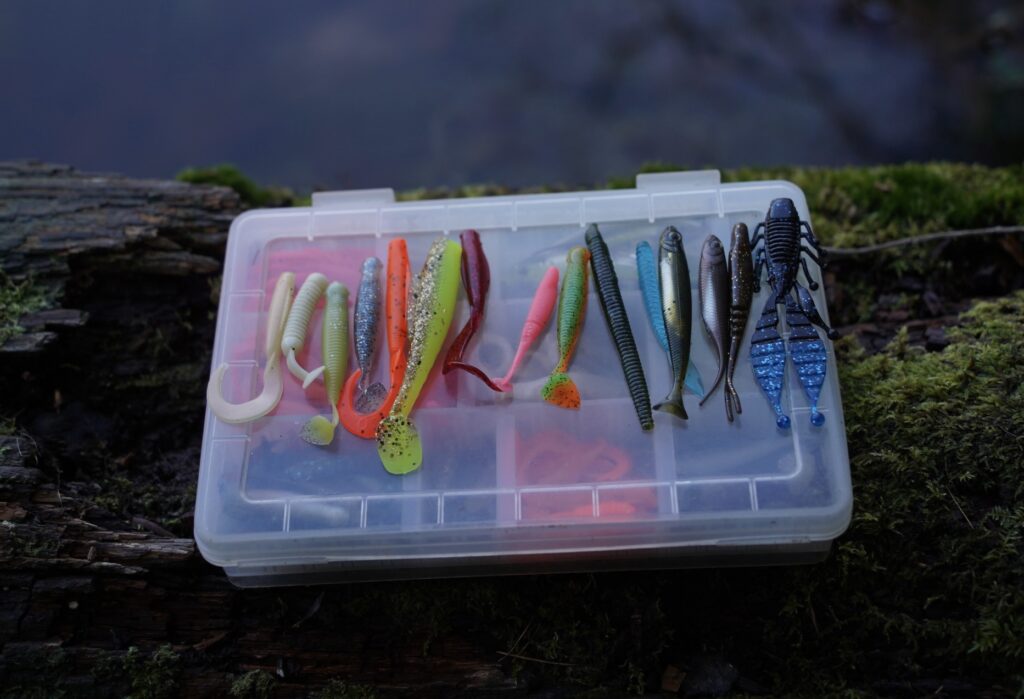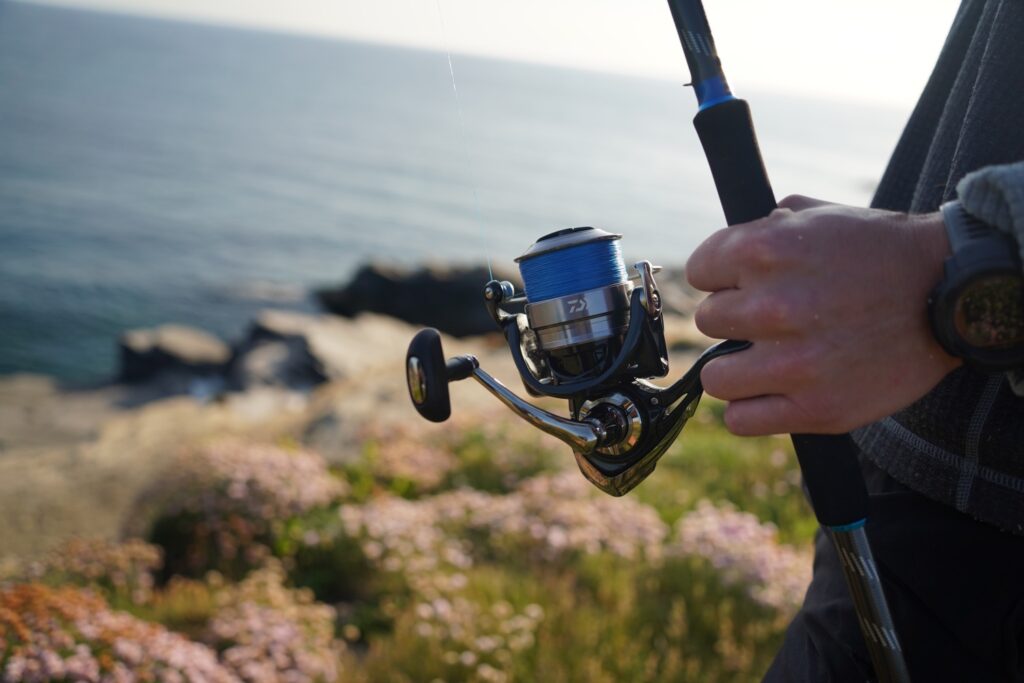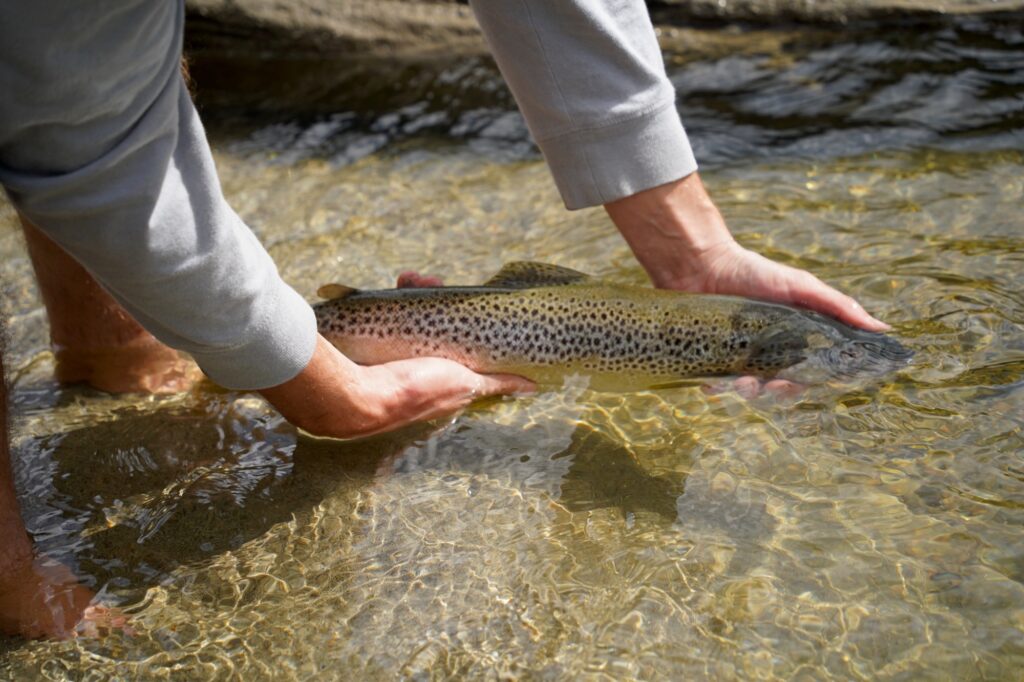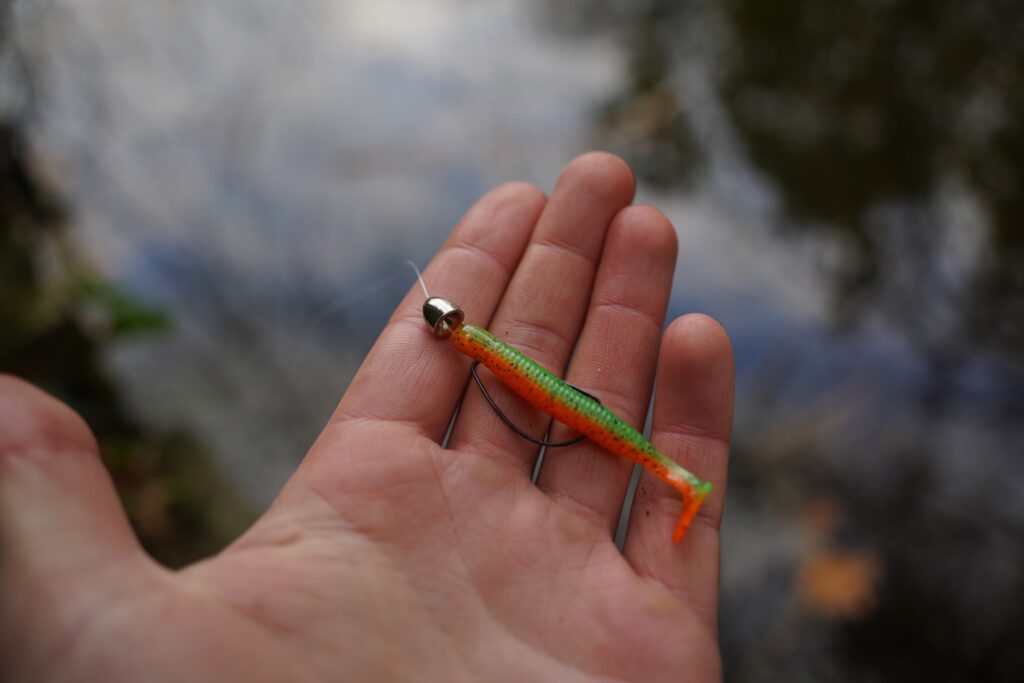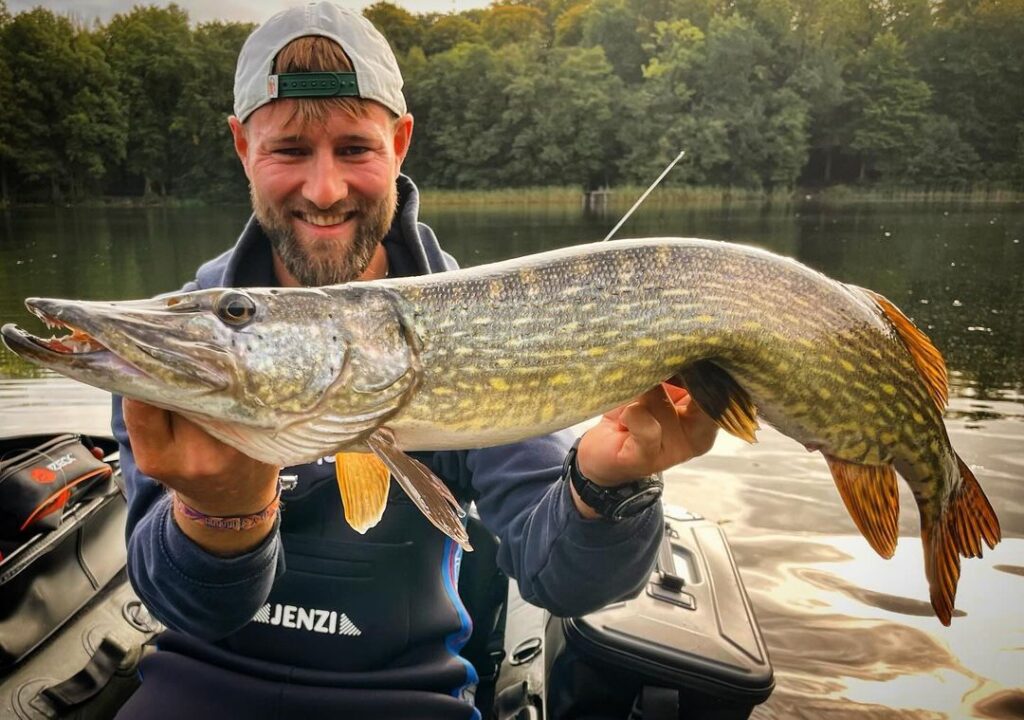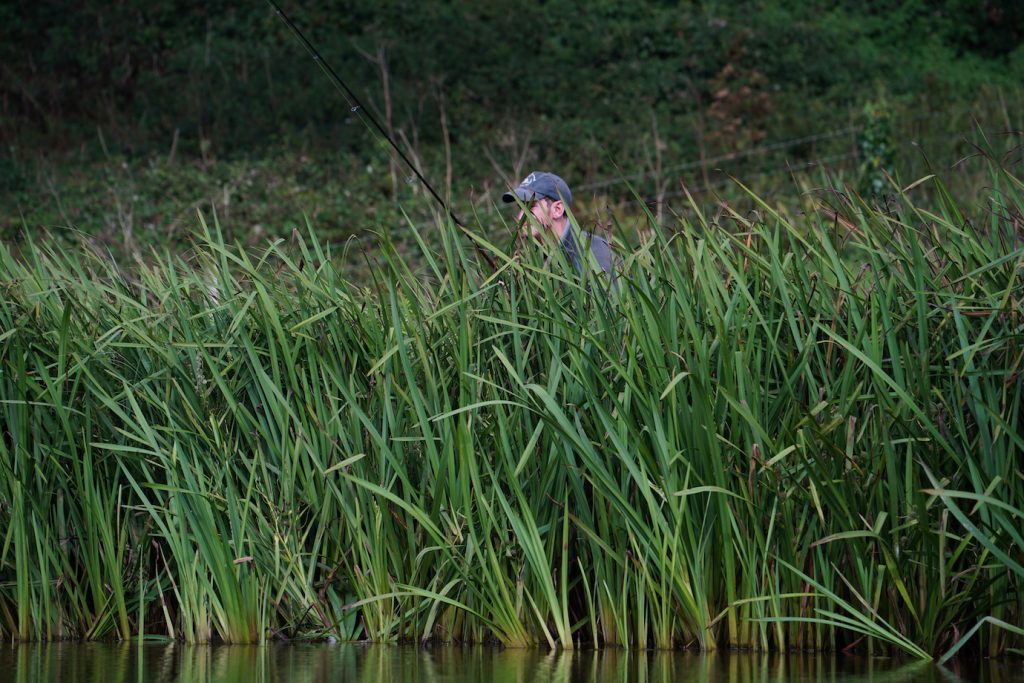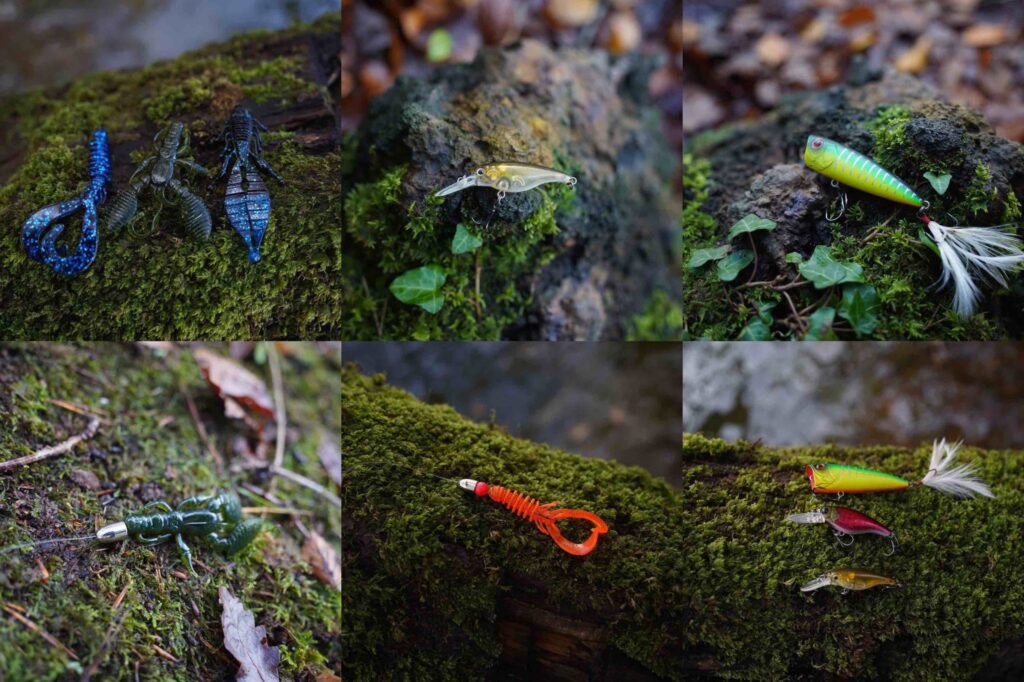
The best braided fishing lines, ranked
We look at the best braids, from the budget options to high-end Japanese imports. Nobody looks back to regular monofilament line once they’ve used a decent braid. Getting a quality braided line means further casting, superior bite sensitivity and improved connection to your lure’s action. It heightens the whole experience…
FISHMAG is an Amazon Affiliate and may earn commission from sales. We also highlight the best deals from other retailers to find you the best price.
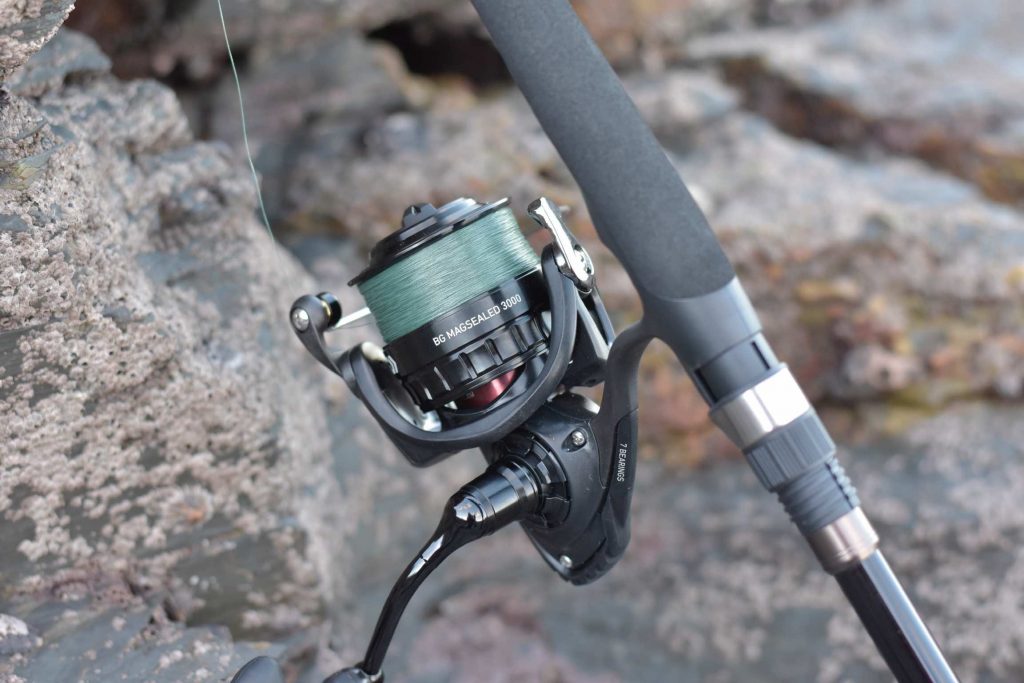
What you get at each price point
Best budget braid (under £15 for 150m)
At under £15, you can get a good quality 4-strand line that completely changes your fishing compared to using regular monofilament. You can cast way further with an incredible increase in casting distance and bite sensitivity. However – most braid on Amazon at this price point is so crap it’s worse than mono. Avoid Sea Knight and Hercules for instance – really terrible stuff. But, there are some good options out there at this price, they are just few and far between.
Recommendation: Spiderwire (also available here) or Berkley X5
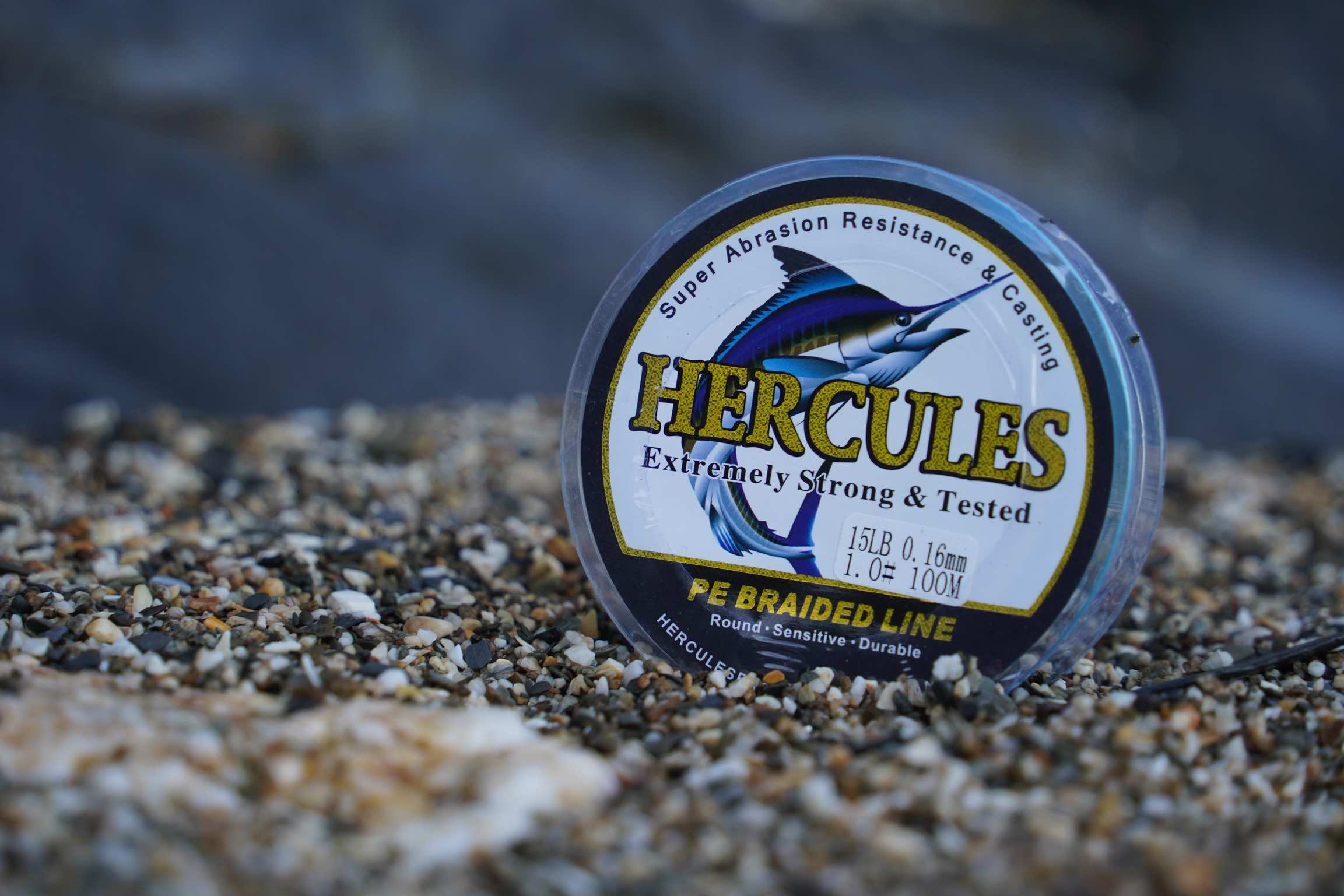
Mid-range braids
At £15 to £25, you get an 8 strand braid, these braids are way ’rounder’ than the 4 strand stuff. This results in a much smoother line, leading to increases in casting distances and a more supple feel. This line is superior to 4 strand in all environments bar fishing in very rough ground or in heavy weeds, as the coarse x4 braid can be sharper so can cut through the kelp. Recommendation: Daiwa J-Braid, also available here in larger spools. The price on this Sufix 832 is also very, very good for what it is.
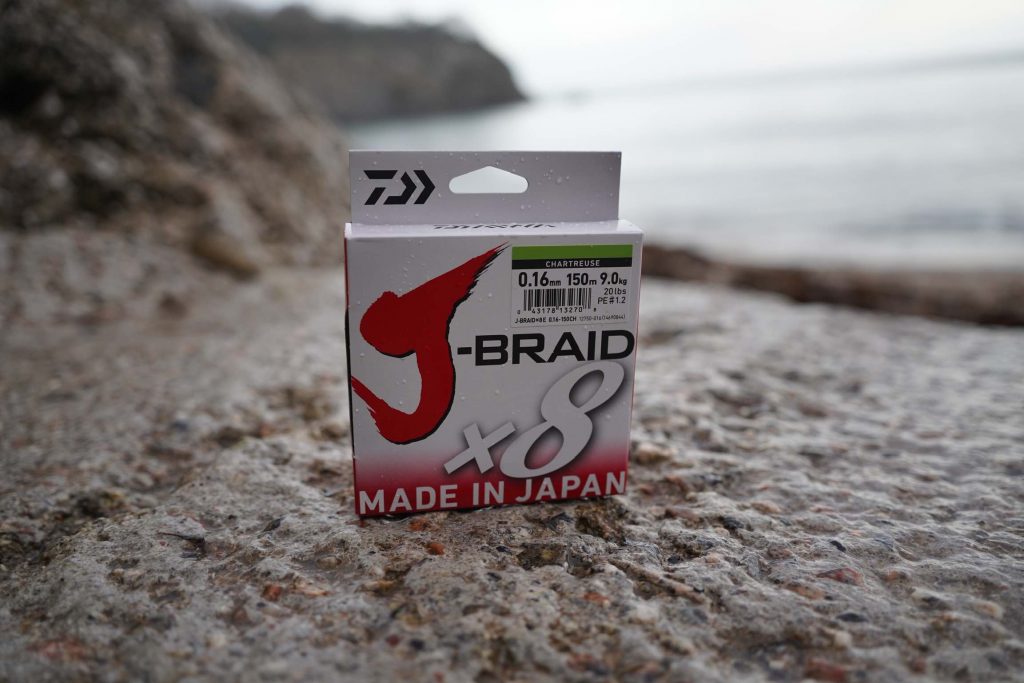
High end braided lines
At £25 to £40, you start to get into the very high-quality 8-strand category. This line is more refined than the cheaper 8-strand lines. It’s rounder, and has a smoother feel. These lines have a tighter waive of the braid, which is much more expensive to produce. This makes the line more water-resistant and more flexible. Recommendations Sufix 8 Strand OR anything 8 strand from (the Japanese) Varivas like this or this or Westin W6 or Suffix 91.
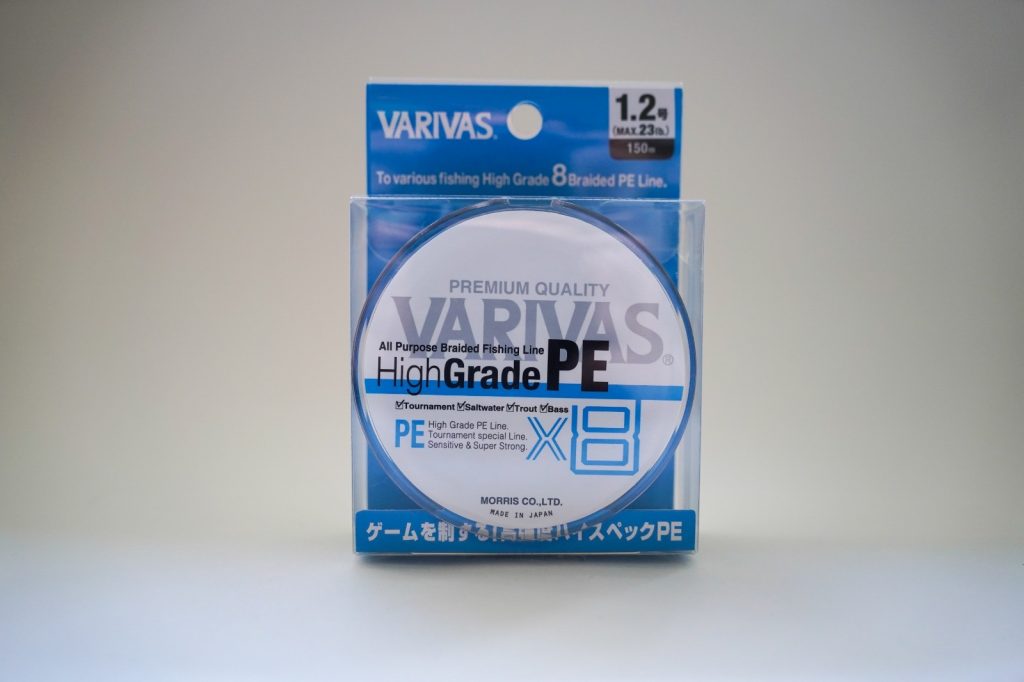
The best braid available in the UK
At £40+ for 150m, lines have an extra element of flare. For example, The Sufix 131 Braid has a 13 strains (1 GORE Performance Fiber, surrounded by 12 braided fibers). This gives it salt resistance (when salt crystals dry inside your braid they damage it a little bit each time, but not so much with this). Braids at this price are at the cutting edge of innovation. Recommendation: Sufix 131 (currently only available in 300m, so 2 spools worth) or Westin 10 OR Varivas Avani Seabass (we haven’t tested it yet, but trust Varivas)
The best braid for LRF / light game
Sunline makes some of the best braids in the world for light game fishing (LRF). For instance, Sunline Siglon x8 in 8lb. A friend of mine had his pink sunline spooled for so long it turned white, and many years later it’s still in use. This is pretty exceptional, but it goes to show that more expensive braid (his cost £50 back in 2016) can be worth it in the long run. The sunline on the market today is a lot more reasonably priced.

Are you sure I shouldn’t just buy some £10 stuff on amazon?
Yes definitely avoid that stuff! To save money on lure fishing lines, fish with high-quality monofilament or fluorocarbon instead and just use a much lighter line than you’d use with braid. 6 – 10lb mono can replace 20lb braid for bass fishing. 3-8lb fluoro can replace 10lb braid for perch and ultra light lure fishing. It won’t be equivalent to braid but will work fine. You won’t have to splash the cash and you don’t have to bother with leader knots. Most people should do this, because there’s no point buying braid unless you’re tying strong leader knots and spending about £15+. Nasty braid will cause you problems, it’s not worth it.
What strength line do you use, and why do you use that?
In testing, braided lines generally turn out to be even stronger than they are labelled. In the UK we have a habit of fishing with heavier lines than needed – or shall I say – optimistic lines. 25lb is a sensible upper limit for all UK lure fishing from the shore. Some will go as high as 30lb if they’re fishing for huge pollock over shallow wrecks for instance.
For example, in our interview with Grant Woodgate, he’s still only using 20lb braid. He’s a guy that fishes insanely rough seas in Portugal over an insanely rugged coast for double figure Portugese bass. Another guy we interviewed, Marcus, of Seeker Sportfishing in Chichester, said that he’s experimented with lighter braids for bass fishing, and settled on 18lb for estuary work and 20lb for coastal stuff. He found there was no added benefit to going lighter. So, 18-24lb seems perfect for more general coastal lure fishing for species like bass.
Further down the page we will go through a selection of different braided fishing lines and look at what they’re good for. But first, let’s look at what strength braid to reach for depending on how you fish.
Braid and leaders – Why you need them
Braid is used as a mainline – the line that you spool directly onto your reel. It is not usually tied directly to the lure. This is because braid is visible to fish, which puts them off your lures. It also provides very little abrasion resistance so gets damaged when it rubs against rough surfaces. Finally, it’s actually pretty tricky to tie braid direct to a lure without line slip.
So, when you buy a braid it is essential that you buy a leader at the same time, with the correct strength. Leaders are usually a tad lighter than the braid, so they snap first and you get to keep your braid. For some species that have sharp teeth or a habit of diving into rough ground, anglers will be forced to use leaders heavier than their mainline.
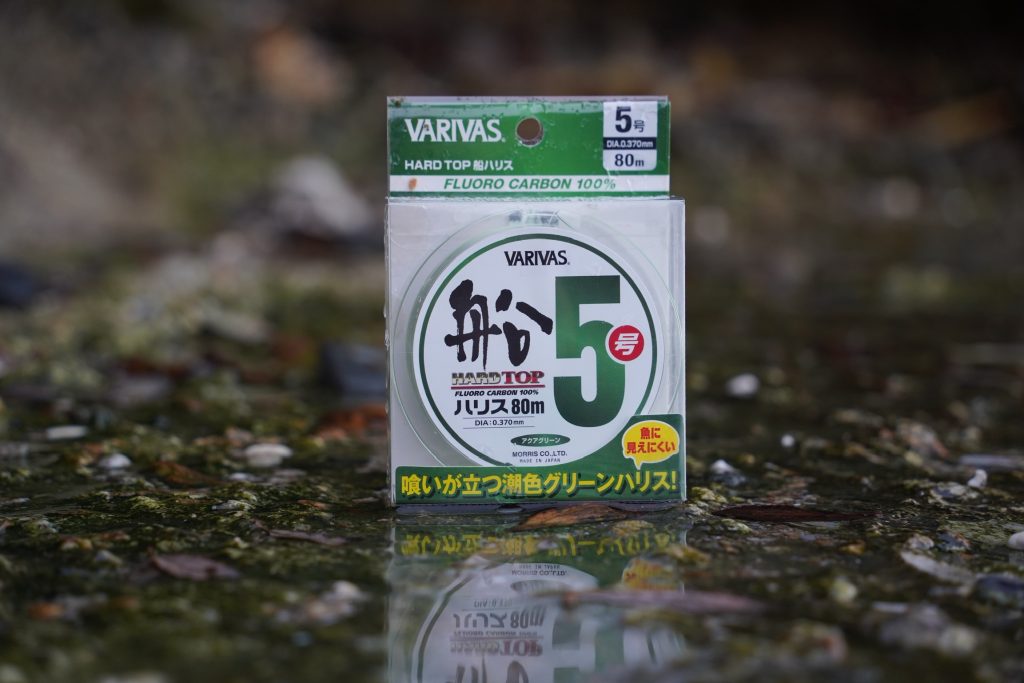
Our Recommendation is Varivas Hard Top Fluorocarbon – It’s solid and reliable
What strength braid should I use?
Best braid for bass fishing
Go for 20lb breaking strain or as close as possible on cleaner ground, and around 25lb for heavier conditions and set-ups. Good reasonably priced braids for bass fishing include Sufix Carrier or 832 Superline or the classic J-braid. J-braid is better if you fish very rough ground, but won’t cast quite as far as Sufix’s. The best high-end braid is this one from Varivas, and it’s in a league of its own.
Best braid for perch fishing
An excellent option is 9lb J-braid. When you are fishing with lighter braids quality is even more important, so you can’t skimp on price too much or you might as well switch to a very light fluorocarbon mainline instead. J-braid does everything you need it to and is reasonably priced compared to other good options.
Best braid for pike fishing
FISHMAG recommends the same braid for pike as bass anglers use in the sea. However, if you are fishing in canals or small lakes you won’t benefit much from the really high-end stuff, since you don’t need a huge casting distance. Sufix Carrier or 832 Superline or the classic J-braid will be excellent in 20lb. If fishing in heavily weeded areas, a 4 strand braid can help to cut through the weeds.
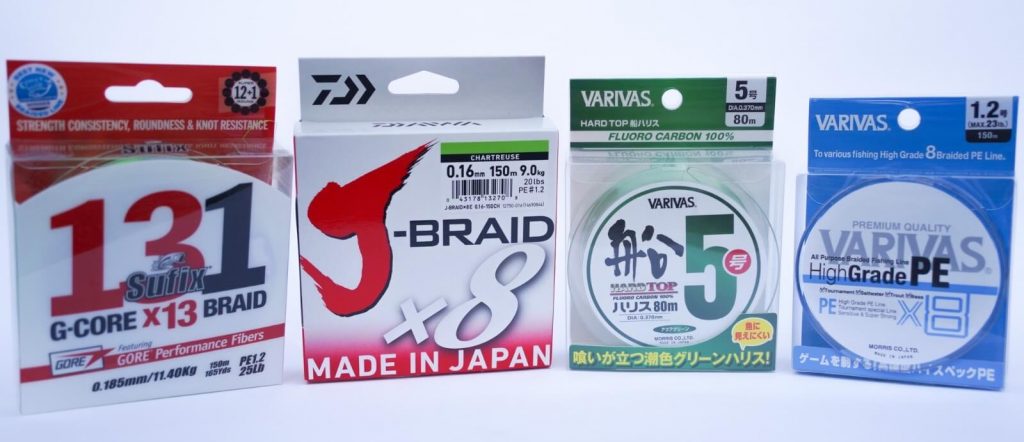
Our braided fishing line reviews
The toughest braided line
To cut straight to the point, the toughest line is Power Pro. It is not especially thin or supple, but it is good enough to be a significant improvement on monofilament. Further, Power Pro is coated with something that makes it significantly more abrasion resistant than other braids. Sometimes, high end braid is not the best.
If the ground you’re fishing is rough and you like to get amongst it without worrying about line fray. For example, when Wrasse fishing Power Pro is widely considered the best line for the job. It can tolerate a lot of abuse compared to fancier brands. I use Powerpro for Wrasse fishing as a go-to.
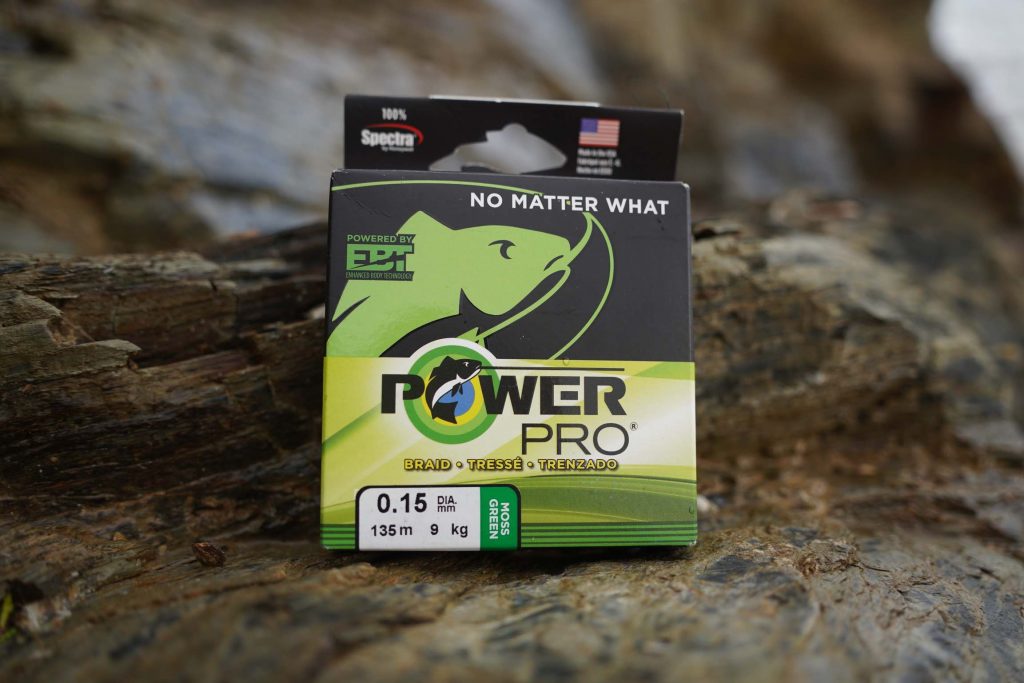
Sea Knight Braid, Hercules Braid & Other Budget Options
FISHMAG has tested cheaper lines, such as Sea Knight braid and Hercules braid. We found both to be horrendously bad. Wind knots, everything – it sucked in our opinion.
There are many brands of cheap braid on major shopping platforms. A giveaway is when it comes in a huge spool, the kind you’d usually get with monofilament. If it costs £8 and comes in a spool like that, take it to your local line recycling bin and start from scratch. You’ll lose more money in terminal tackle from tangles and wind knots.
But there is a way to avoid the cost of decent braid…
To save money on line, fish with high-quality monofilament or fluorocarbon. Just use a much lighter line than you’d use with braid. 6 – 10lb mono can replace 20lb braid for bass fishing, 3 – 6lb fluoro can replace 10lb braid for perch and ultra light lure fishing. It won’t be equivalent to braid but it’s certainly functional and even has some advantages over braid. This will save quite a bit of cash. But don’t consider buying super cheap braid.
And bad braid really ruins a set-up. It’s easy to think that line isn’t that important and doesn’t make much difference. How different can it really be? Well, it’s a complete game-changer. You could even say that a good rod and reel are good in part because they allow you to fish with quality, fine lines. You can’t put a good braid on an overweighted rod and clumsy reel and fish effectively. You need a decent set-up to handle a light braid.
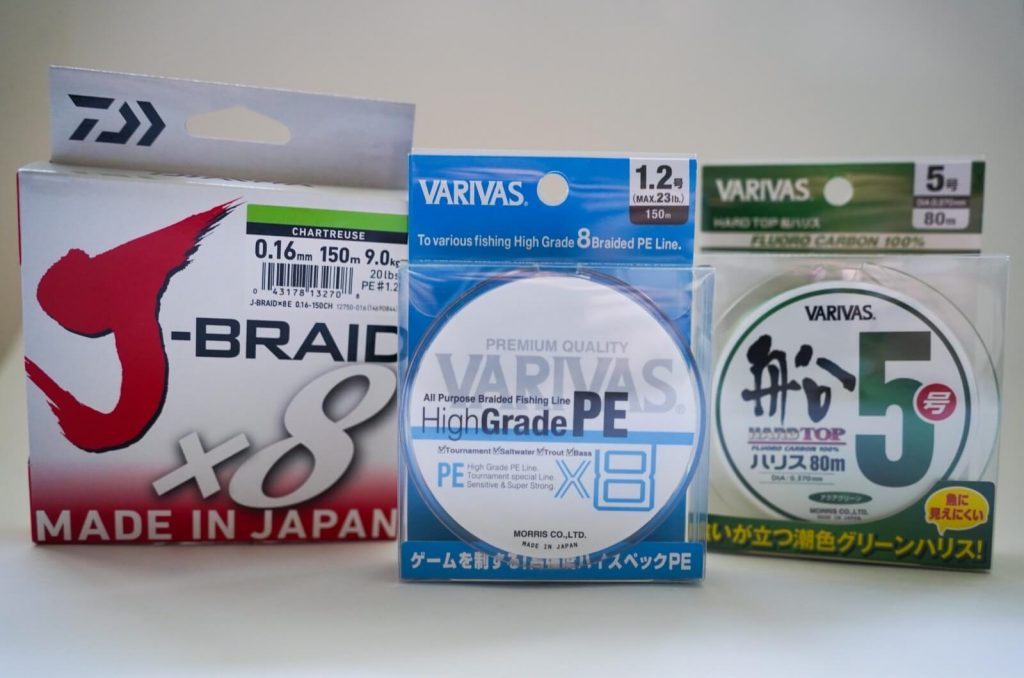
Mid-range braided fishing line
Best budget braided line – J-Braid (4-strand vs 8-strand)
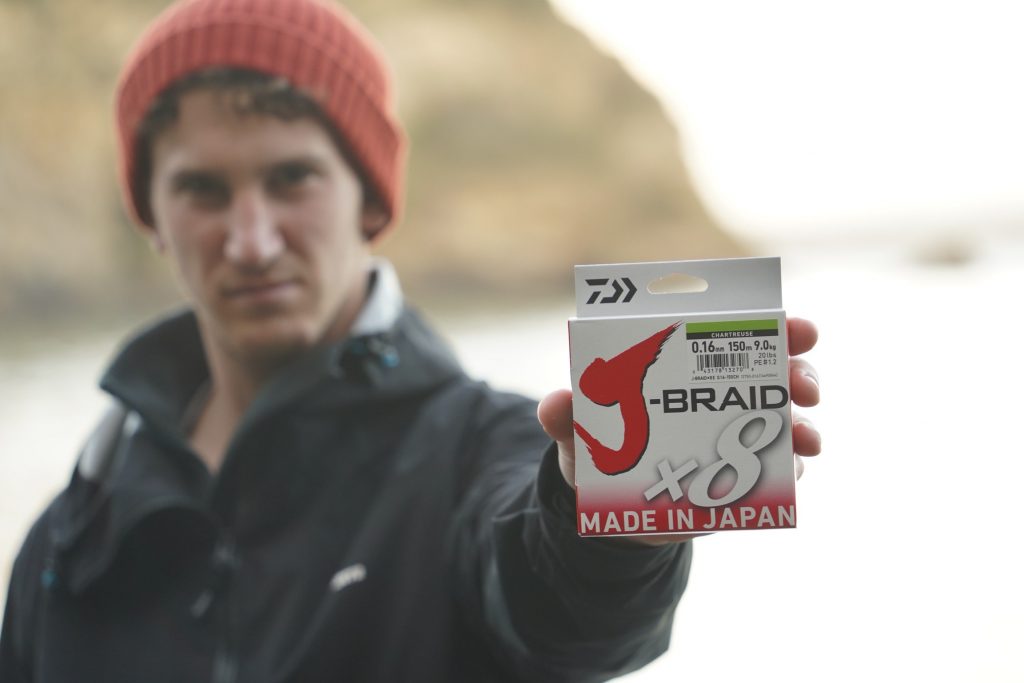
As you know, braids generally get better as the number of strands increases. 8-strand is superior to 4-strand for instance. J-braid has been popular for a long time in the UK for bass fishing because it was possible to import from Japan way before many other brands made it here. The 8-strand braid is much rounder, making the line smoother. This means it flies through your rod’s eyelets more easily and with less friction. This results in a noticeably longer casting distance.
If you’re bass fishing with surface lures or whacking jigs to the horizon over clean ground, you would want the lowest PE ratio you could get. Something like 20lb breaking strain is best.
Generally, it’s much nicer to fish with the rounder braid you can afford because casting a long way is intrinsically enjoyable and does improve your catch rate some days.
J-braid remains a classic staple and a reliable option at a very good price for an eight-strand braid. If you want to save money, braid is not a good option because good very cheap braids don’t really exist. Good mono mainlines do exist, however, and they present a slightly cheaper alternative to braid. This is only if you’re willing to lose casting distance and breaking strain. As long as you set your drag properly, a fish is not going to snap you off. This is also a good option for anglers that haven’t learned a good leader knot. It’s also suitable for those who can’t be bothered to tie them all the time!
Overall, J-braid, an excellent premium Japanese import, has become a staple in the UK lure scene for good reason.
Varivas High Grade X8

This is another 8-strand high-grade braid PE #1.0 (Max 20lb). Super smooth and supple, with an extra coating to reduce friction against rod eyelets when casting, for huge casting distances. Reach for this for general bass fishing. The only way to know which braid you’ll prefer is to use both. Even braids at the same quality and price point feel a bit different. Some are more floaty, more supple. Others hold their form a bit more and have more of a coating on them.
Best high-end braid
Sufix 131 Braid

If you’re looking at this line you’re already familiar with the benefits of high-end braids. You can cast much further, and the line lasts much longer than cheaper braids. They actually work out a similar price in the end. For an extra £10 you get 13 fricken fibres and a fricken gore thing in the middle of the line you can only see under a microscope… The idea is that more strands mean less line fraying. The gore in the middle prevents salt water damage, which is caused by salt crystals forming inside your braid and screwing with it.
We interviewed a guy from Suffix to understand this.
A friend of mine used a £50 line for 3 years. He didn’t have much fraying, except a bit around the leader. This meant he only lost a couple of metres of line here and there. Somehow that line was still fricken’ magic years on. Witnessing this kind of thing from a line is what converts people into tackle tarts.
So, what about this Suffix 131 braid? The short version is that it probably lasts a bit longer than high-end 8-strand braids without losing strength from salt damage. It probably frays a bit less because it has more strands. It is genuinely completely different in terms of its design.
Once you’ve used a good braid that costs £35+, you aren’t going to want to fish with anything else again.
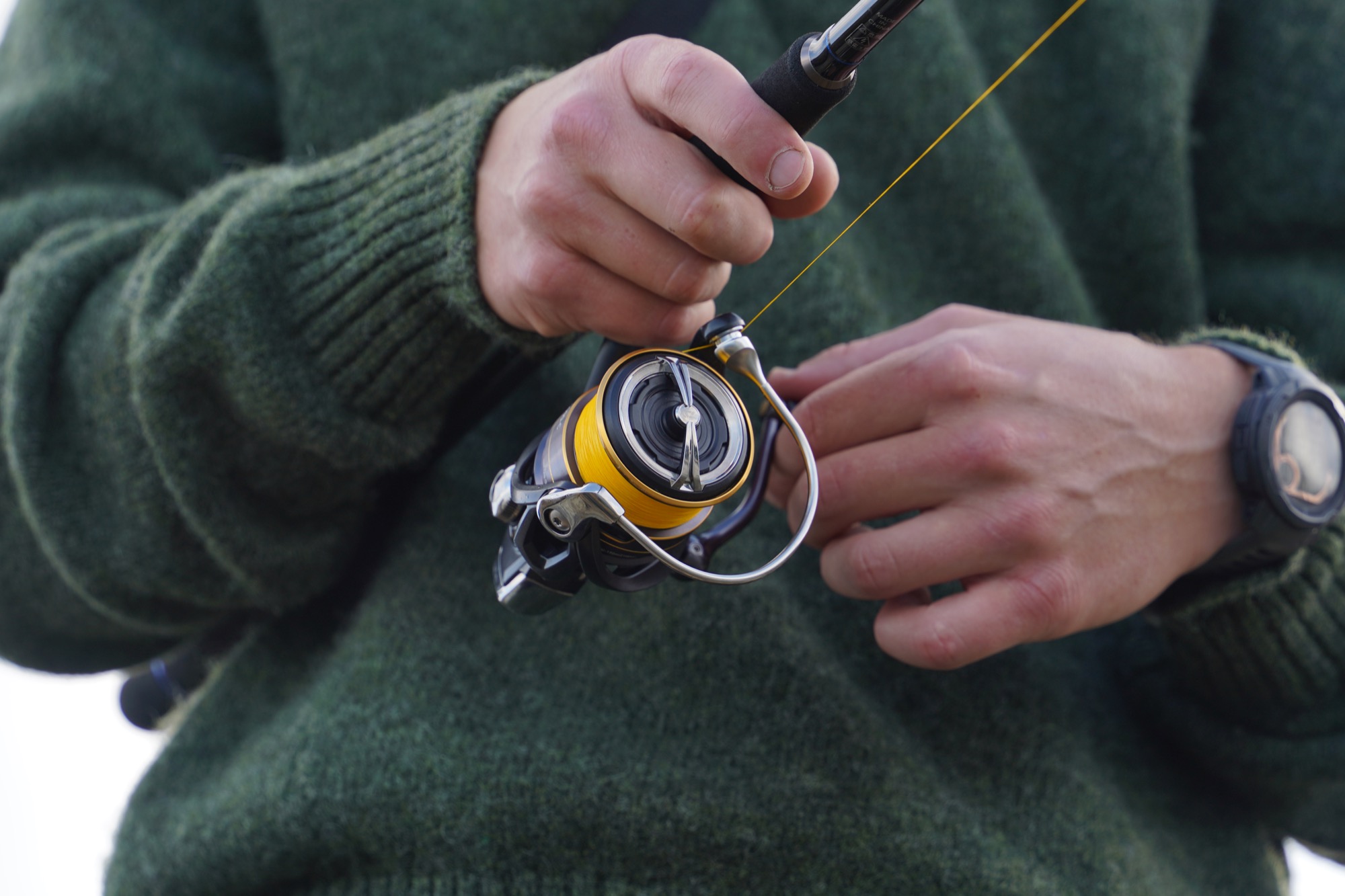
The advantages of high-end braids
High-end braid like Sunline or Sufix 131 is durable, lasting up to 3 years with regular use, and rarely tangles. It’s cost-effective in the long run, with a £50 braid potentially cheaper than multiple £20 lines over a few years. However, it requires a high-end reel (£80+), as average reels can’t handle fine braids. High-quality braid can increase your casting distance by 20% and enhance the overall fishing experience, provided your reel can manage it. Line quality often determines casting distance and sensitivity. Poor lines or budget reels are usually the main culprits for tangles and problems when lure fishing in the UK. Visit spinning reels page for more information.
What you need to know about braid
What is braid?
A type of fishing line that is made from woven material. All braid is made from a material called HDPE (High-Density Polyethylene) or UHWPE (Ultra-High Weight Polyethylene). The general process involves a braiding machine and a number of PE fabrics span around each other to form braid. These fibers are said to be 15 times stronger than steel by weight. Even NASA has used it in space, so it’s pretty hardy stuff.
Characteristics:
- Thinner than Mono (roughly 1/3 of the thickness)
- Minimal stretch
- Low line memory
- Good Abrasion Resistance
- UV Resistance
Which brand makes the best braid?
Most lure anglers just learn of a few brands they trust and stick with them. Sufix, Daiwa, Varivas, Sunline, etc. Then, as long as you choose the right breaking strain from that brand for your fishing, you’re good. It doesn’t need to be any more complicated than that.
What strength braid for UK saltwater lure fishing?
Braid stronger than 25lb is never usually needed for UK shore fishing with lures. Don’t forget, you can land a 50lber with 20lb braid, you have a drag on your reel to release tension from your line and a rod that bends and absorbs much of the pressure. Even in the Pacific where they target fish casually over 10kg from the shore, they still often only use 30lb braid.
The only reason not to fish even lighter than 20lb for bass fishing in the UK is because you lose abrasion resistance. It would force you to use a lighter leader, again losing more abrasion resistance where you need it most.
It’s also harder to tie leader knots with braids below 10lb, especially when your fingers are like frozen sausages in British winter!
Braid is stronger than regular monofilament
Braid is much stronger than monofilament at the same thickness. Varivas claims it is 2.5 to 3 times stronger than similar diameter sized nylon line. When fishing with lures that weigh under 30g, braid is the only line that allows you to cast a long distance, unless you’re willing to fish with 5lb fluorocarbon or mono. Most people aren’t.
To illustrate this, when fishing from a local harbour in Cornwall, I can cast a 7g mackerel lure further than most anglers using 90g leads with 20lb monofilament. This is because their line provides a lot of friction as it is cast – you can hear the mono moving clumsily through the eyelets. Good braid flies through the eyelets like air. When fish are further out, which they sometimes are, this means I catch a lot more fish than people using mono.
Braid does not stretch. Or does it?
This is a myth! Braid actually does stretch, however only by around 3%, roughly 10x less than nylon/mono line.
Lack of stretch = far superior bite detection
Bites are transmitted through braided lines better than they are through mono. This is because when you or a fish pull on braid, it doesn’t really stretch, whereas monofilament stretches a lot. The stretch in mono is more pronounced the further out you are fishing, because there is more line to stretch. The result is that when you get a bite with braid you feel it come up through the line, into the rod and up your fricken’ arm. On a light rod, it’s like the fish is biting you, almost!
Lack of stretch = superior lure presentation control
Unless you’re fishing in deep water or a heavy current, braid provides much more direct contact with your lure. This means when you twitch your rod tip, the action transfers into the lure much more directly. It results in more control over how you present lures, especially at range. However, bear in mind that many anglers overwork their lures. Mono can actually mask this problem a bit, so it might be assisting some of your angling buddies who work lures too hard and fast. I’m sure you never do it!
Lack of stretch = slightly inferior hook holds
This is good when you want to be able to strike quickly. It’s bad when you want to delay your own response, such as when fish are tentative feeders and striking too early pulls the hook from their mouth.
Braid is also a disadvantage when hook holds are weak because it is more likely to pull the hook. Most find these to be very minor disadvantages compared to the benefits. If this is the case when you’re fishing, try switching out your FC leader for mono instead.
Lack of stretch = easier to get out of snags
Braid pulls out of snags more easily because you can exert more pressure on the hook hold. Those who fish a lot will know that a sharp upward twitch more often gets you out of a snag than a slow more gentle movement. Braid allows you to move your lure more rapidly.
Lack of stretch = no line memory issues
The stretch in mono causes what’s known as ‘line memory’. The line will not stretch back to where it was before. This results in line becoming thinner and weaker over time and may reduce its future stretch capacity.
Braid floats whereas mono and fluoro sink
Braid floats in the water, whereas monofilament and fluorocarbon sink. If you’re fishing with lures from the shore, this means that you end up with direct contact with your lure. With mono, when you stop reeling, your line sinks, creating a downward bow in your line that reduces your direct contact with fish.
If you’re fishing from a boat or in strong current, the opposite is true. Braid will move more in a current and will create an upward bow when fishing in deeper water, as it tries to float to the surface. This is a disadvantage of braid when used in deeper water, as it reduces direct contact with your lure compared to mono or fluoro. Most anglers will find the advantages outweigh this disadvantage in most scenarios.
he science:
Braided line has a specific gravity of 0.97, which means it floats. Water has a specific gravity of 1. Nylon has a specific gravity of about 1.14, which means it is semi submerged. Fluorocarbon has a specific gravity around the 1.76 mark. This means it fully sinks.
Braid is prone to wind knots
Braid is more prone to wind knots because it’s so light and supple and can turn in on itself with ease. Mono is less flexible. This is mainly a problem for anglers using a cheap braid or a cheap reel. When it comes to high-end braids, you do need a very fancy reel to be able to handle their suppleness and fineness. Daiwa probably has the best line lay of any reel manufacturer, but Penn, Shimano and recently Savage Gear also excellent.
When you’re new to fishing or don’t fish that often, bird nests and line tangles are a commonality. If you’re getting tangles, it’s probably not your technique, it’s just your tackle. I haven’t had a tangle in the spool in years, just the rare wind knot when fishing with a slack line. My angling buddy bought a £250 reel and says he has never had a tangle since, I frickn’ hope so for that price – he’s a tackle tart. Luckily he’s co-founder of FISHMAG so that’s all good.
Anyway, you won’t get knots if you use good kit. Baitcasting reels/multipliers are another story. If you get in tangles with them it is more down to technique – they are tricky to get to grips with and not worth it for most people.
Knot Strength
he knots you use with braid are vital to maintaining a good breaking strain of the line. Braid generally breaks at higher than the stated breaking strain, but knots do weaken braid more than fluoro or mono. A bad choice of knot can cause the braid to slip, not what you need. The good news is these knots are relatively easy to learn, and once you know them you’re never going back.
With braided lines, fishmag generally recommends using a mono/fluoro leader to help with abrasion resistance, and provide some stretch. To tie this we recommend the alright knot for easy tying, but the FG knot is considerably stronger and well worth learning. Just practice it one rainy evening, and you’ll have it mastered. Here’s the most useful video I found.
Abrasion resistance, UV resistance – How does this affect Longevity?
UV resistant
One of the big perks of braid is that it is UV resistant, quite the opposite of mono, which goes hard over time with UV exposure. Big mooring ropes for ships are made with the same stuff, and they can last up to 10 years!
Abrasion Resistant
This does depend on the coating of the braid, as some braids have a special abrasion resistant coating such as PowerPro. Generally, braids with less strands are more abrasion resistant.
What strand braid is best?
Higher end braids usually have more strands for the same breaking strain, which makes them harder to make. It’s especially hard to make high-strand braids with very thin lines.
If you’re looking for higher end braid, look at how many strands it is. Note however that just like with ball bearings on reels, manufacturers know that anglers rely on this heuristic for quality and so add ball bearings that don’t make any functional improvement. If you choose a braid from this article you know it’s trustworthy. If you use an alternative, let us know how you get on with it at [email protected].
How is thickness calculated? PE, LB, KG or MM Diameter
Most braided line is imported from Japan and the US. The US rates line using Lbs. Japan uses the PE system which is a measure of line thickness. In Australia, they use KG and MM. In addition, Line companies can use different methods to measure the thickness of the line. This can be especially tricky with flatter braids. The thing to know is that really with a decent braid the stated breaking strain is lower than the strain under which it would actually break. They give those ratings cautiously – you’re probably not going to find that it’s your braid that snaps under strain from a fish. A knot is probably going to go first.
What line to use for perch fishing
You have two good options for mainline when lure fishing for perch – extremely light fluorocarbon 6lb or less or braid up to 10lb. Braid is thinner, stronger, casts much further and provides enormously more bite sensitivity. Unfortunately, it’s also visible to fish and is damaged easily when rubbed against sharp surfaces, so a leader is needed. The reason you should avoid monofilament is because it stretches.
If you are a beginner and do not know how to tie the FG knot or another leader knot to connect the braid to a leader, either learn the knot or simply use fluorocarbon as your mainline and tie lures direct to that.
A cheap braid doesn’t actually provide that much of an advantage over monofilament because it’s still quite thick and therefore doesn’t actually cast any better. There is some really nasty braid out there that is predisposed to knots.
Invest in a better braid, use a decent reel that can handle the thinness of the braid, and as long as your fluorocarbon leader is lighter than your mainline, you won’t lose the braid anyway if you get the snagged (the leader will break first) and will have it for a long time.
Braid breaking strain for perch
Depending on how light you want to fish and how many abrasive snags there are in the waters you like to fish, go for 6-10lb braid. I use 8lb personally and consider 10lb a bit strong, but if there are pike in those waters and lots of snags, having a bit of extra abrasion resistance could be handy. If you’re fishing in city canals with lots of snags 10lb is prudent, especially if pike are present. If your drag is set right, you won’t snap off even with 2lb fluorocarbon mainline (with a landing net!) so breaking under the strain of a fish isn’t a concern.
If you buy 16lb braid, especially of a cheap variety that is quite thick, you will have a harder time casting lighter jig heads and lures under 7g.
If you’re interested, check out our guide on recycling your old fishing line.
Buying a whole new lure fishing set up? Check out our guide to the best combos here.
Savage Gear SG2 Reel Review
Savage Gear SG2 Reel Review Note: since writing this review, we do not recommend these…
Best brown trout lures UK
Best brown trout lures UK Let’s go through every type of brown trout lure and…
The Ideal Lure Fishing Set-Up
Lure fishing set ups, everything you need. In this article, I will recommend specific rods,…
Spinning for Brown Trout in the UK | 20 Tips
Sea trout photography credit: David Miller Spinning for Brown Trout in the UK | 20…
Lure fishing rigs & when to use them
Lure fishing rigs & when to use them Choosing the right rig is often the…
Lure fishing for pike
Lure fishing for pike & choosing the best pike rods Fishmag is reader-supported and earns…
Lure fishing for perch | 24 Perch Fishing Tips
Lure fishing for perch | 24 Perch Fishing Tips Right now in a water near…
Find the best perch lures & rigs
Find the best perch lures & rigs Let’s start by looking at the four perch…

